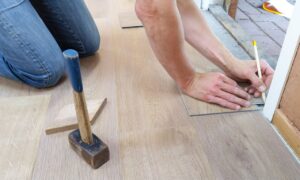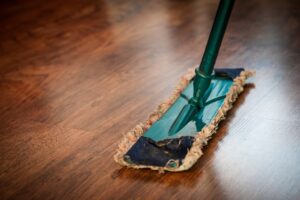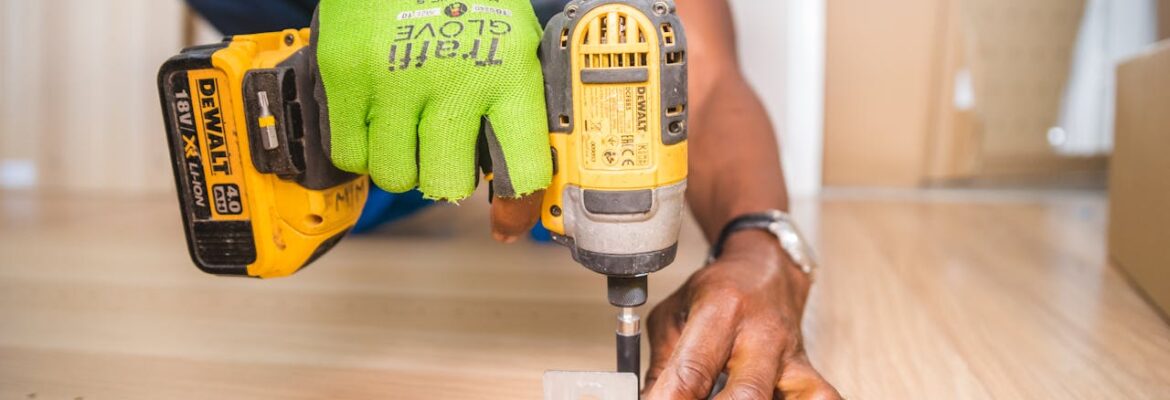Installing hardwood flooring is one of the best ways to elevate the look and feel of your new home. Whether you’ve just moved in or are planning a renovation, proper preparation is essential to ensure a smooth installation process and a lasting finish. From clearing the space to controlling humidity levels, each step plays a vital role in achieving beautiful, durable floors. Understanding the preparation process will not only make the hardwood installation easier but also help you avoid common pitfalls.
Assess the Condition of the Subfloor
Before installing hardwood flooring, it is crucial to evaluate the condition of the subfloor. The subfloor should be clean, level, and dry to provide a stable base for the new flooring. If the subfloor is uneven or damaged, it can lead to creaking, warping, or gaps between planks over time.
In homes with a concrete subfloor, it is essential to check for moisture levels, as excessive moisture can cause the wood to expand and buckle. Using a moisture meter can help assess whether the surface is ready for installation. For plywood subfloors, ensuring all boards are securely fastened will prevent movement that could lead to an unstable floor.
Control Humidity and Temperature Levels
Hardwood flooring is highly sensitive to changes in humidity and temperature. Before installation, it is advisable to maintain indoor conditions within a stable range to prevent expansion or contraction of the wood. The ideal humidity level for hardwood installation is between 30% and 50%, while temperatures should be kept around 18-24°C.
Using a dehumidifier or humidifier can help regulate moisture levels, particularly in regions with fluctuating seasonal climates. By acclimatizing your hardwood planks to the indoor environment for at least 72 hours before installation, you can reduce the risk of post-installation movement.
Ensure Proper Furniture and Appliance Planning
If you have recently moved into your new home, planning the placement of furniture and appliances in advance can make the flooring installation process more efficient. Heavy furniture or large kitchen appliances can be difficult to move after the flooring is installed. Consider using protective pads under furniture legs and ensure appliances are lifted rather than dragged into place to avoid damaging the floors. Planning the layout beforehand will prevent unnecessary movement that could scratch or dent the new hardwood surface.
Clear the Space and Remove Old Flooring
Creating a clutter-free environment is essential for a smooth installation. Remove all furniture, rugs, and decor items from the space where the hardwood flooring will be installed. If you are replacing existing flooring, ensure that old carpets, tiles, or previous wood flooring are removed entirely.
Once the old flooring is taken out, sweep and vacuum the area thoroughly to eliminate dust and debris. If there are adhesive residues from previous installations, these should be sanded or scraped away to create a clean, even surface.
Plan for Door Clearances and Trim Adjustments
Hardwood flooring adds thickness to the floor, which can affect door clearances and baseboard height. Before installation, assess whether doors need to be trimmed to accommodate the new flooring. If baseboards or skirting boards are in place, consider whether they need to be removed or undercut to allow the flooring to fit seamlessly.
Sanding or adjusting doors in advance can save time and prevent last-minute modifications during the installation process. Ensuring a proper fit for transitions and thresholds between rooms will also contribute to a professional finish.

Choose the Right Underlay for Your Hardwood Floors
An underlay plays a crucial role in enhancing the durability and comfort of hardwood flooring. It helps reduce noise, provides insulation, and creates a moisture barrier between the subfloor and the hardwood planks.
Different types of underlays are available depending on the type of hardwood flooring and subfloor. For example, foam underlays are suitable for floating hardwood floors, while vapor barriers are essential for installations over concrete subfloors. Consulting with a flooring expert can help you determine the best underlay for your specific needs.
Acclimate the Hardwood Flooring Before Installation
One of the most important steps before installation is allowing the hardwood flooring to acclimate to the indoor environment. Wood is a natural material that expands and contracts in response to changes in humidity and temperature.
To prevent future warping or gaps, the flooring should be stored in the room where it will be installed for at least 72 hours. This allows the wood to adjust to the ambient conditions of your home. Stacking the planks with adequate airflow between them ensures an even acclimatization process.
Seal Gaps and Cracks in the Subfloor
Before installing hardwood flooring, it is important to inspect the subfloor for any visible gaps, cracks, or holes. Small openings can create an uneven surface and allow moisture to seep through, potentially causing damage to the wood over time.
Using a quality filler or sealant can help close any imperfections and create a stable foundation for the flooring. If the subfloor has significant gaps, reinforcing it with additional plywood sheets can enhance stability and reduce noise when walking across the floor.
Have a Plan for Post-Installation Cleanup
Installing hardwood flooring generates dust and debris that can settle throughout your home. Planning for a thorough post-installation cleanup will help maintain a polished finish and create a comfortable living environment.
Vacuuming with a soft brush attachment, using a damp mop, and ensuring proper ventilation can help remove dust particles. Keeping windows open during and after installation will also assist in clearing airborne debris and any lingering odors from adhesives or sealants.

Conclusion
Preparing your home for hardwood installation is a crucial step in ensuring the longevity and beauty of your new floors. By assessing the subfloor, managing humidity levels, and carefully planning the installation space, you can achieve a seamless and professional result. Taking the time to properly prepare will not only enhance the aesthetic appeal of your home but also protect your investment for years to come.
Image source:
https://www.pexels.com/photo/person-using-dewalt-cordless-impact-driver-on-brown-board-1249611/
https://www.pexels.com/photo/person-holding-pencil-1388944/
https://www.pexels.com/photo/brown-wooden-floor-48889/

